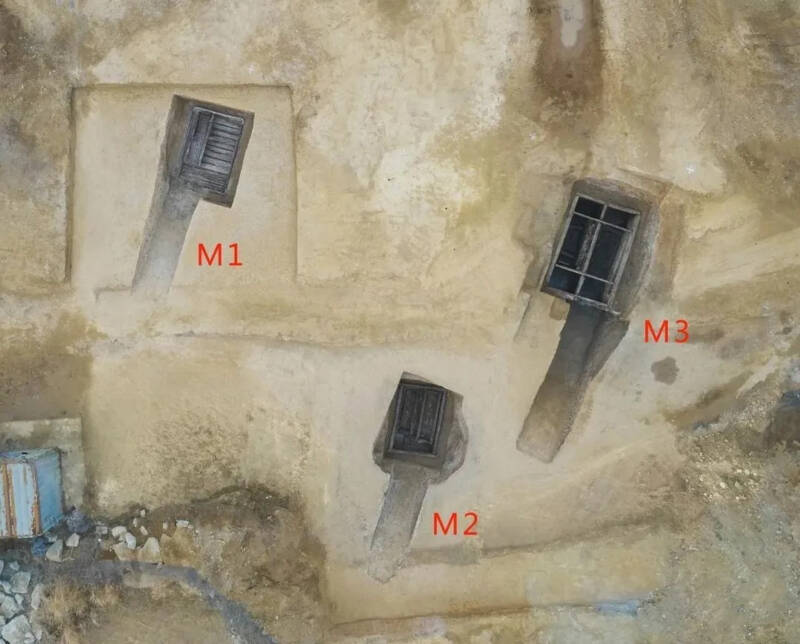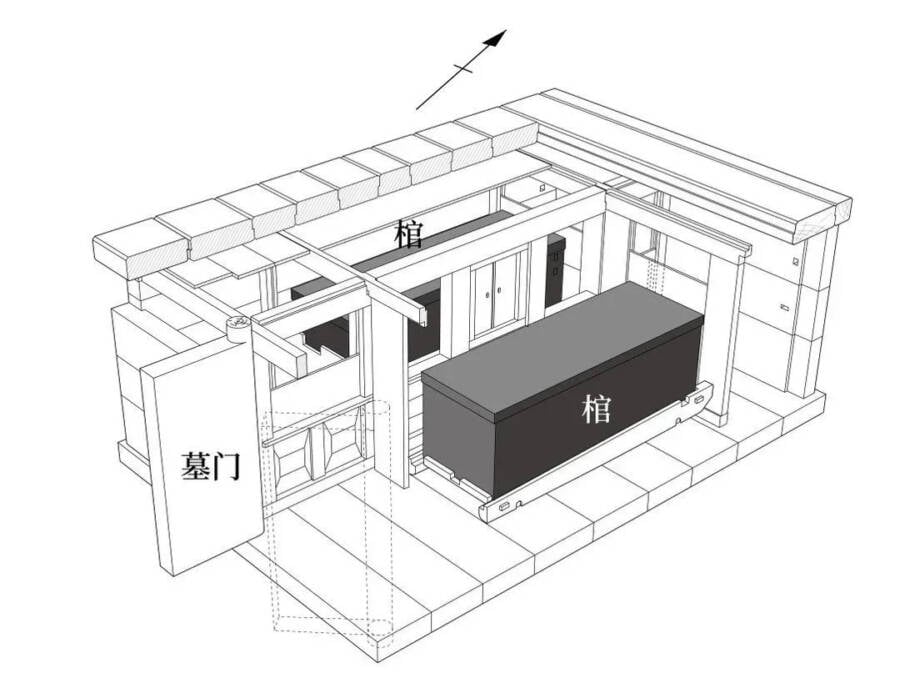Archaeologists in China unearthed three 1,800-year-old tombs complete with unique "residential" layouts and at least 70 artifacts that once belonged to a wealthy family.

Institute of Archaeology at the Chinese Academy of Social SciencesWooden coffins inside one of the looted tombs.
Archaeologists in Rizhao, China, recently uncovered three 1,800-year-old tombs believed to date back to the Han Dynasty. The tombs feature unique layouts that include doors, windows, arches, and connected rooms, suggesting they were designed to imitate a residence.
Within the tombs, researchers unearthed 70 artifacts that provide invaluable information about who was buried inside as well as life along ancient China’s eastern coast.
The Discovery Of The “Residential” Tombs

Institute of Archaeology at the Chinese Academy of Social SciencesThe three burial sites were designated as M1, M2, and M3.
From December 2023 to January 2024, archaeologists from the Shandong Provincial Underwater Archaeology Research Center and the Rizhao Municipal Institute of Cultural Relics and Archaeology conducted excavations in Keshijia Park in Rizhao, China, in preparation for the park’s expansion.
During the dig, they unearthed a burial mound with three tombs. According to a press release from the Institute of Archaeology at the Chinese Academy of Social Sciences, looters had already discovered and robbed two of the tombs. However, the third, dubbed M3, was essentially untouched.
Each of the three tombs held two burials, and at least one featured connected rooms with miniature doors and windows, brick arches, and murals with floral patterns. Researchers believe they likely belonged to a wealthy family from the Han Dynasty (206 B.C.E. to 220 C.E.).
Within the tombs, archaeologists unearthed 70 artifacts — and one of them even revealed exactly who was buried inside.
The Treasures Found Within These Han Dynasty Tombs

Institute of Archaeology at the Chinese Academy of Social SciencesGlazed pottery from tomb M2.
The artifacts found inside the tombs included pottery, an iron sword, mirrors, hairpins, bronze seals, and more. However, the layout of the tombs was just as fascinating to archaeologists as the objects within.
“What is particularly noteworthy is that the well-preserved M3 tomb has a clear structure. There are doors and windows connecting the two tombs, and the tomb structure has obvious residential characteristics,” the press release explained.
The researchers noted that the bodies in M3 were likely husband and wife, and they were probably placed inside at different times. The tombs were likely built to have a “residential” feel to allow for comfort in the afterlife.

Institute of Archaeology at the Chinese Academy of Social SciencesA rendering of the structure of tomb M3.
While the human remains have decayed with time, the artifacts in the tomb provided convincing clues as to who these people were. Archaeologists discovered bronze seals in two of the tombs containing the surname Huan, suggesting that the people buried inside were from the same family. One of the seals spells the full name “Huan Jia,” who was likely the person laid to rest within.
Archaeologists also uncovered the remains of a rare carriage used to carry the coffins to the tomb, which they called “exquisitely crafted and an uncommon find.”
With both the grandeur of the tombs and their contents, researchers are confident that the family buried within was wealthy and influential.
What’s more, some of the wood vessels and glazed pottery found during the excavations were connected to the Chu, Wu, and Yue regions of ancient China, providing invaluable insight into the area’s history.
After reading about the Han Dynasty tombs found in China, dive into the true story of the terracotta warriors, the 8,000 statues created to protect China’s first emperor in the afterlife. Then, read about Baiae, the now-sunken Roman party town.





